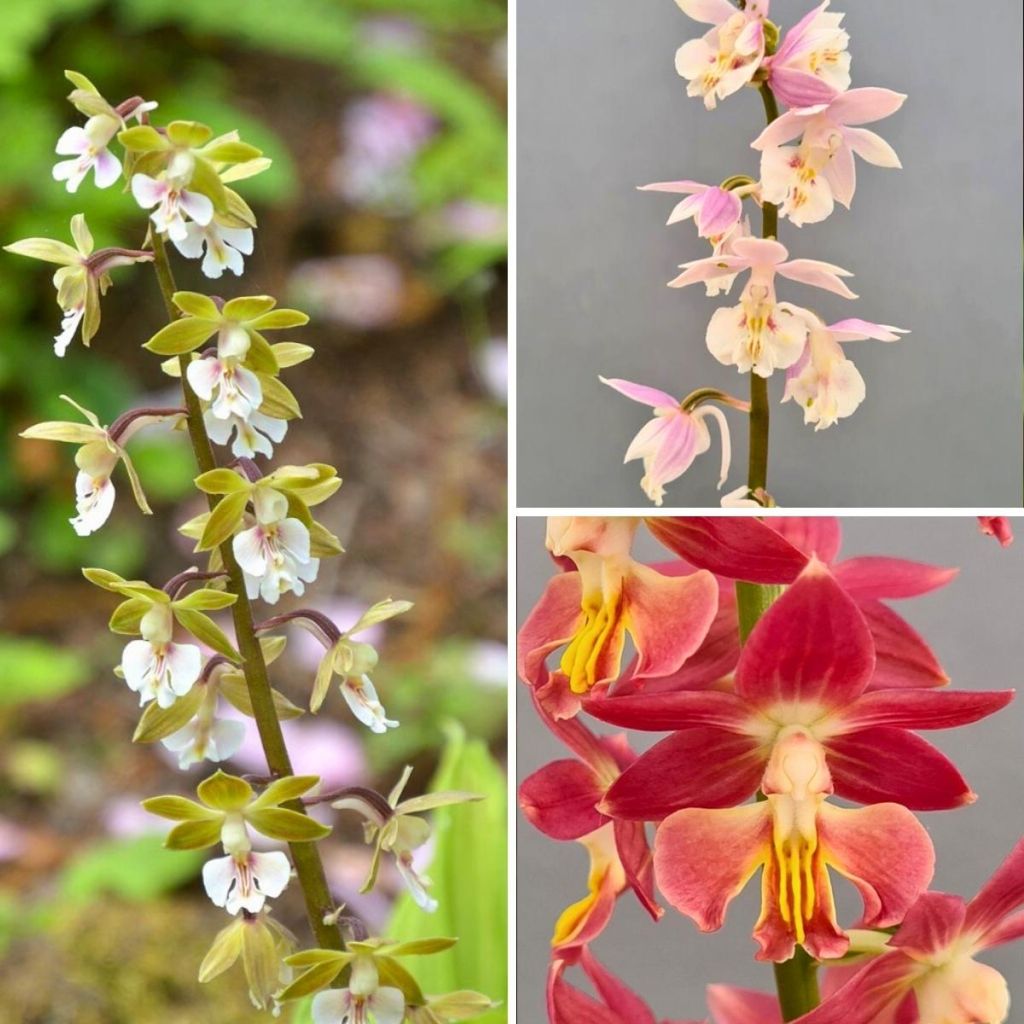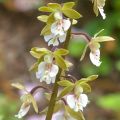Shipping country and language
Your country of residence may be:
Your country of residence is:
For a better user experience on our website, you can select:
Your shipping country:
Andorra
Austria
Belgium
Bulgaria
Canada
Croatia
Cyprus
Czechia
Denmark
Estonia
Finland
France
Germany
Greece
Hungary
Iceland
Ireland
Italy
Latvia
Lithuania
Luxembourg
Malta
Monaco
Netherlands
Poland
Portugal
Romania
Slovakia
Slovenia
Spain
Sweden
Switzerland
United Kingdom
We only deliver seed and bulb products to your country. If you add other products to your basket, they cannot be shipped.
Language:
French
German
English
My Account
Hello
Plantfit
Log in / Register
Existing customer?
New customer?
Create an account to track your orders, access our customer service and, if you wish, make the most of our upcoming offers.


Perennial Orchid Collection
Perennial Orchid Collection
Calanthe (x) hybrida Red Sunset, Pink & Cream, Olive Green
Order in the next for dispatch today!
Dispatch by letter from €3.90.
Delivery charge from €5.90 Oversize package delivery charge from €6.90.
More information
This item is not available in your country.
Select delivery date,
and select date in basket
This plant carries a 12 months recovery warranty
More information
We guarantee the quality of our plants for a full growing cycle, and will replace at our expense any plant that fails to recover under normal climatic and planting conditions.
From €5.90 for pickup delivery and €6.90 for home delivery
Express home delivery from €8.90.
Does this plant fit my garden?
Set up your Plantfit profile →
Collection items (3 plants)
Description
The collection consists of:
- x 1 Calanthe 'Red Sunset': a vigorous and floriferous variety. Its flowers are large, composed of petals and sepals in a beautiful, soft, and deep red, and a faded red lip, lighter in colour, marked with yellow. Flowering occurs between April and May.
- x 1 Calanthe hybrid 'Pink & Cream': a variety with generally bicoloured flowers. They are widely open, composed of elongated sepals and petals, slightly pointed, more or less coloured in pink, and a trilobed lip in creamy tones. Flowering occurs between May and June.
- x 1 Calanthe 'Olive Green': Flowers of an uncommon olive green colour on petals and sepals touched with brown. The lip is pinkish white, more or less marked with light pink and dark pink. A contrasting two-tone impression of the most beautiful effect. Flowering occurs between April and May.
The calanthes in this collection are easy to grow, as they can be planted outdoors in regions where frosts are not pronounced and of short duration: their rootstock can withstand brief frosts down to -9 °C in relatively dry soil. Each plant develops a pseudobulb and forms a clump of foliage from spring onwards. The 45 cm tall flower spikes bear several flowers that open staggered, each lasting 8 to 10 days. The rootstock of these orchids produces few suckers; it spreads through rhizomes. The plant goes dormant in winter when its foliage has completely yellowed. Given their average hardiness, protecting the rootstocks from the rigours and winter humidity with a thick mulch will be necessary.
In favourable climates, plant your calanthes in partial shade, sheltered from the wind, in light, humus-bearing soils with a neutral or slightly acidic tendency. Allow 5 to 7 plants per square meter for each to develop freely. You can plant them between the stones of a moist rockery in a nice pocket of leaf compost mixed with pumice. They will also thrive at the edge of a cool woodland in the same type of substrate. An association with an Asian fern like Athyrium niponicum var. pictum Red Beauty, washed and veined with burgundy red, gives a very attractive result, as with a Trillium sessile. These calanthes grow well in large pots, which will be overwintered in a cold greenhouse.
When you receive your orchids, handle them with care: these plants produce few roots and are delicate!
Flowering
Foliage
Plant habit
Botanical data
Calanthe
(x) hybrida
Red Sunset, Pink & Cream, Olive Green
Orchidaceae
Cultivar or hybrid
Planting and care
Calanthe likes sheltered areas, part shade, the thick, airy humus of undergrowth and light soil with moderate moisture from spring to late summer and drier conditions in winter. In wet winter conditions, the rhizome will rot, especially if there are severe frosts. Place it in semi-shade on the edge of tall trees, with the best exposure being to the west. In heavy clay soil, add 1/3 leaf compost and 1/3 non-chalky gravel, which you mix into your topsoil to a depth and width of 40 cm. In regions with cold winters, winter protection is essential against both cold and damp. To do this, lay a 20 cm layer of leaves or shredded bark on top of the stump and, if necessary, waterproof protection on top of this mat.
Growing in pots or containers is possible in a mixture of 60% ericaceous soil, 20% horticultural compost, and 20% coarse sand. Garden calanthes are quite demanding plants during the growing season: a weekly application of geranium-type fertiliser at half the recommended dose from mid-May to mid-September will be very beneficial.
Planting period
Intended location
Care
This item has not been reviewed yet - be the first to leave a review about it.
Haven't found what you were looking for?
Hardiness is the lowest winter temperature a plant can endure without suffering serious damage or even dying. However, hardiness is affected by location (a sheltered area, such as a patio), protection (winter cover) and soil type (hardiness is improved by well-drained soil).

Photo Sharing Terms & Conditions
In order to encourage gardeners to interact and share their experiences, Promesse de fleurs offers various media enabling content to be uploaded onto its Site - in particular via the ‘Photo sharing’ module.
The User agrees to refrain from:
- Posting any content that is illegal, prejudicial, insulting, racist, inciteful to hatred, revisionist, contrary to public decency, that infringes on privacy or on the privacy rights of third parties, in particular the publicity rights of persons and goods, intellectual property rights, or the right to privacy.
- Submitting content on behalf of a third party;
- Impersonate the identity of a third party and/or publish any personal information about a third party;
In general, the User undertakes to refrain from any unethical behaviour.
All Content (in particular text, comments, files, images, photos, videos, creative works, etc.), which may be subject to property or intellectual property rights, image or other private rights, shall remain the property of the User, subject to the limited rights granted by the terms of the licence granted by Promesse de fleurs as stated below. Users are at liberty to publish or not to publish such Content on the Site, notably via the ‘Photo Sharing’ facility, and accept that this Content shall be made public and freely accessible, notably on the Internet.
Users further acknowledge, undertake to have ,and guarantee that they hold all necessary rights and permissions to publish such material on the Site, in particular with regard to the legislation in force pertaining to any privacy, property, intellectual property, image, or contractual rights, or rights of any other nature. By publishing such Content on the Site, Users acknowledge accepting full liability as publishers of the Content within the meaning of the law, and grant Promesse de fleurs, free of charge, an inclusive, worldwide licence for the said Content for the entire duration of its publication, including all reproduction, representation, up/downloading, displaying, performing, transmission, and storage rights.
Users also grant permission for their name to be linked to the Content and accept that this link may not always be made available.
By engaging in posting material, Users consent to their Content becoming automatically accessible on the Internet, in particular on other sites and/or blogs and/or web pages of the Promesse de fleurs site, including in particular social pages and the Promesse de fleurs catalogue.
Users may secure the removal of entrusted content free of charge by issuing a simple request via our contact form.
The flowering period indicated on our website applies to countries and regions located in USDA zone 8 (France, the United Kingdom, Ireland, the Netherlands, etc.)
It will vary according to where you live:
- In zones 9 to 10 (Italy, Spain, Greece, etc.), flowering will occur about 2 to 4 weeks earlier.
- In zones 6 to 7 (Germany, Poland, Slovenia, and lower mountainous regions), flowering will be delayed by 2 to 3 weeks.
- In zone 5 (Central Europe, Scandinavia), blooming will be delayed by 3 to 5 weeks.
In temperate climates, pruning of spring-flowering shrubs (forsythia, spireas, etc.) should be done just after flowering.
Pruning of summer-flowering shrubs (Indian Lilac, Perovskia, etc.) can be done in winter or spring.
In cold regions as well as with frost-sensitive plants, avoid pruning too early when severe frosts may still occur.
The planting period indicated on our website applies to countries and regions located in USDA zone 8 (France, United Kingdom, Ireland, Netherlands).
It will vary according to where you live:
- In Mediterranean zones (Marseille, Madrid, Milan, etc.), autumn and winter are the best planting periods.
- In continental zones (Strasbourg, Munich, Vienna, etc.), delay planting by 2 to 3 weeks in spring and bring it forward by 2 to 4 weeks in autumn.
- In mountainous regions (the Alps, Pyrenees, Carpathians, etc.), it is best to plant in late spring (May-June) or late summer (August-September).
The harvesting period indicated on our website applies to countries and regions in USDA zone 8 (France, England, Ireland, the Netherlands).
In colder areas (Scandinavia, Poland, Austria...) fruit and vegetable harvests are likely to be delayed by 3-4 weeks.
In warmer areas (Italy, Spain, Greece, etc.), harvesting will probably take place earlier, depending on weather conditions.
The sowing periods indicated on our website apply to countries and regions within USDA Zone 8 (France, UK, Ireland, Netherlands).
In colder areas (Scandinavia, Poland, Austria...), delay any outdoor sowing by 3-4 weeks, or sow under glass.
In warmer climes (Italy, Spain, Greece, etc.), bring outdoor sowing forward by a few weeks.


